Dental Inlays
A conservative, aesthetic, and highly resistant solution
Dental inlays are an excellent alternative to traditional crowns when looking to restore damaged teeth without the need to remove a significant amount of healthy tooth structure. These custom restorations not only offer strength and aesthetics but also preserve as much of the original tooth as possible, ensuring functionality and long-term durability
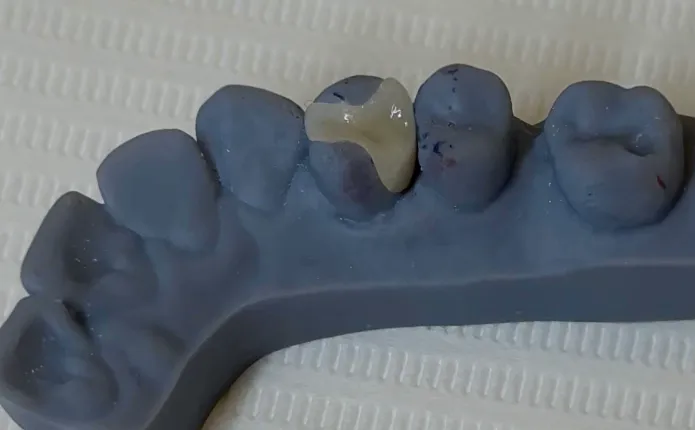
When do we recommend an inlay?

Teeth with extensive but not complete damage
When decay or wear affects a large portion of the tooth but still retains enough healthy structure to avoid a crown. If the damage compromises the cusps (the tooth's peaks), an inlay, such as an onlay or overlay, offers greater stability than conventional resin

Cases where a composite resin restoration is not sufficient
In teeth previously treated with large restorations that do not provide adequate resistance to withstand long-term chewing forces; inlays are ideal for high-pressure areas, such as molars, where a resin restoration could fracture or wear down quickly

Dental fractures or cracks
When a tooth has a crack or fracture that does not compromise the entire crown, an inlay can reinforce the damaged structure without the need for a full crown.

Endodontically treated teeth
Teeth that have undergone root canal treatment often require additional reinforcement due to the loss of dental structure. In these cases, inlays provide a conservative solution that protects the treated tooth.

Patients seeking a less invasive approach.
For those who want to preserve as much of their natural tooth as possible and avoid the unnecessary wear of a crown, inlays are an ideal alternative.
Types of Dental Inlays
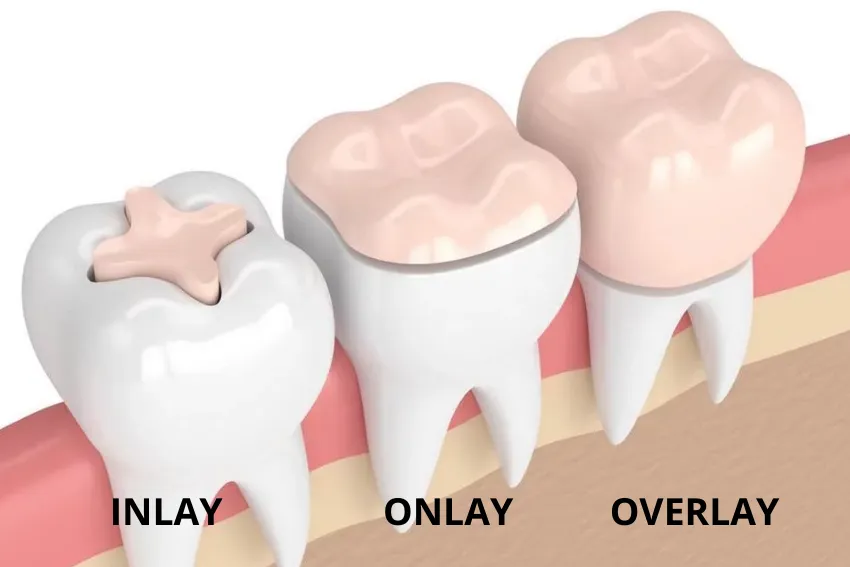
Inlay
Ideal for repairing damage that affects only the inner part of the tooth, such as grooves or smaller cusps. It is used in cavities where the damage does not compromise the outer walls of the tooth. It provides a perfect fit, ensuring an optimal seal that reduces the risk of future leakage.
Onlay
It extends to cover one or more cusps of the tooth while also repairing its interior. It is an ideal solution when the damage is more extensive and affects a larger part of the tooth but not enough to require a full crown. It provides additional stability and strength while preserving more dental structure than a crown.
Overlay
It fully covers the tooth's cusps and part of the outer surface but does not extend to the gum margin like a crown. It is the closest option to a crown, making it ideal for cases that require maximum strength without wearing down the entire tooth. Perfect for teeth with extensive damage that still retain enough healthy structure.
Advantages Compared to Composite Resins
Durability and Strength
Inlays, made from materials such as ceramic or lithium disilicate, are significantly more resistant than composite resins, making them ideal for areas of high masticatory pressure.
Greater precision and sealing
Its custom design provides a perfect fit, minimizing the risk of leakage or secondary cavities.
Preservation of aesthetics
Inlays are not only more durable but also maintain their appearance over time, unlike resins, which can stain or wear down.
Why Choose Dental Inlays Instead of Crowns?
Unlike crowns, inlays require less removal of the original tooth structure. This helps preserve more healthy tissue and maintain the tooth's vitality.
Despite being less invasive, inlays are highly resistant and designed to withstand chewing forces. Materials such as lithium disilicate or ceramic provide strength comparable to crowns, ensuring a long-lasting result.
Made from materials that perfectly mimic the color and translucency of natural teeth, inlays blend almost seamlessly with the rest of the dentition
The treatment is less aggressive, reducing the risk of dental sensitivity or damage to the tooth pulp.
Inlays are an ideal solution for large cavities, dental fractures, or teeth that have undergone root canal treatment and need reinforcement.
How Are Dental Inlays Made?
- Diagnosis and Evaluation
- Tooth Preparation
- Final Placement

An evaluation is performed to assess the damage and select the appropriate type of inlay.
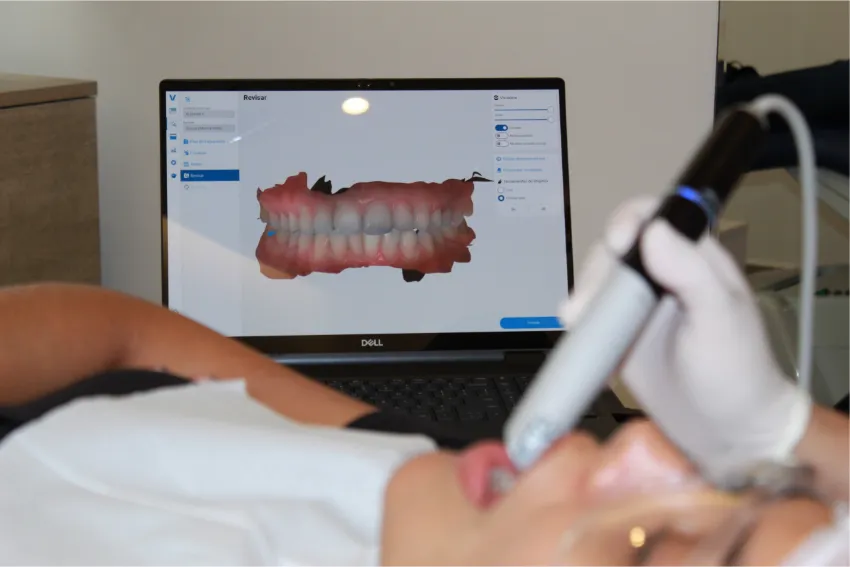
The decay or damaged tissue is removed, and an impression or scan is taken to design a custom inlay.
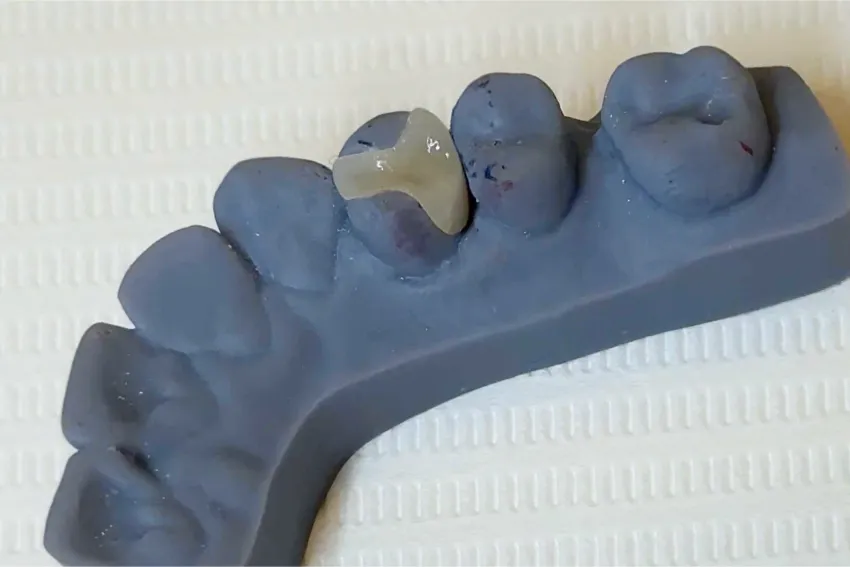
Once fabricated, the inlay is tested to ensure a perfect fit and then permanently cemented.
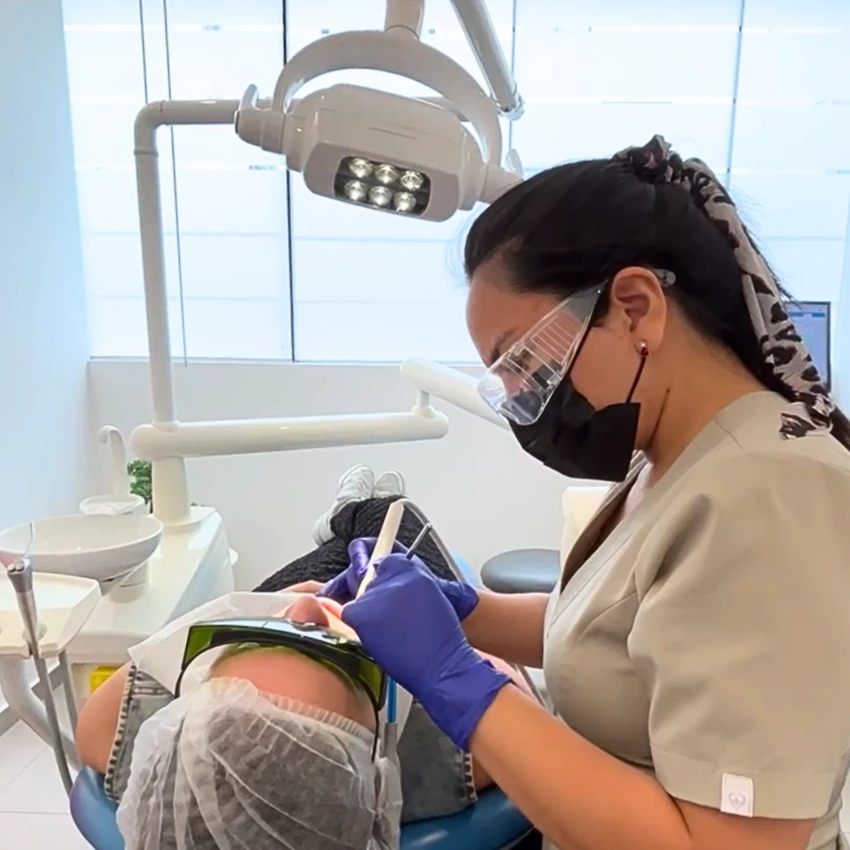
Dental inlays not only restore the function and aesthetics of the teeth but also offer a more conservative and efficient approach to dental care. Their strength and aesthetics make them an ideal option for those seeking a high-quality restoration with minimal impact on the tooth structure.
Cases
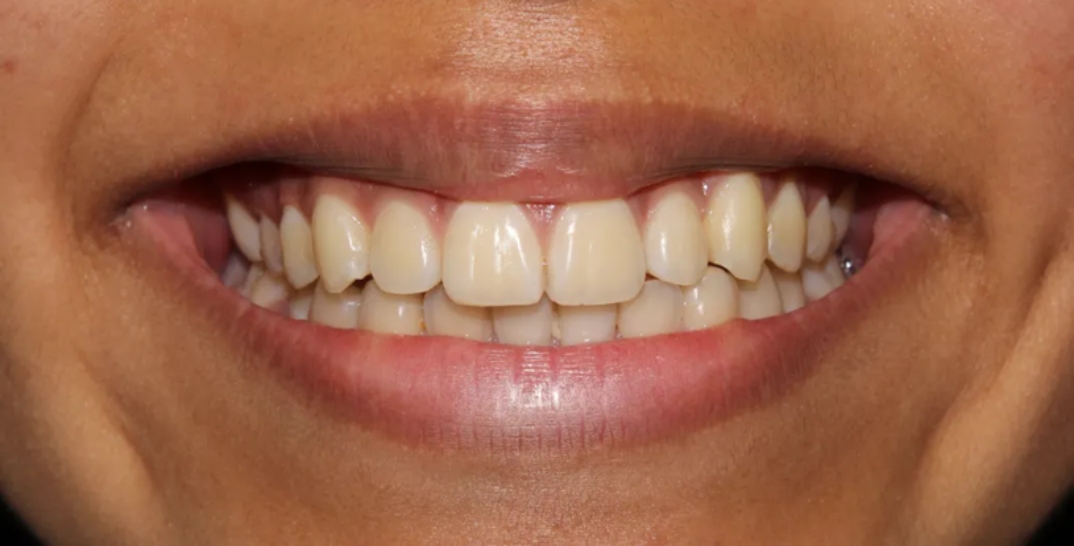
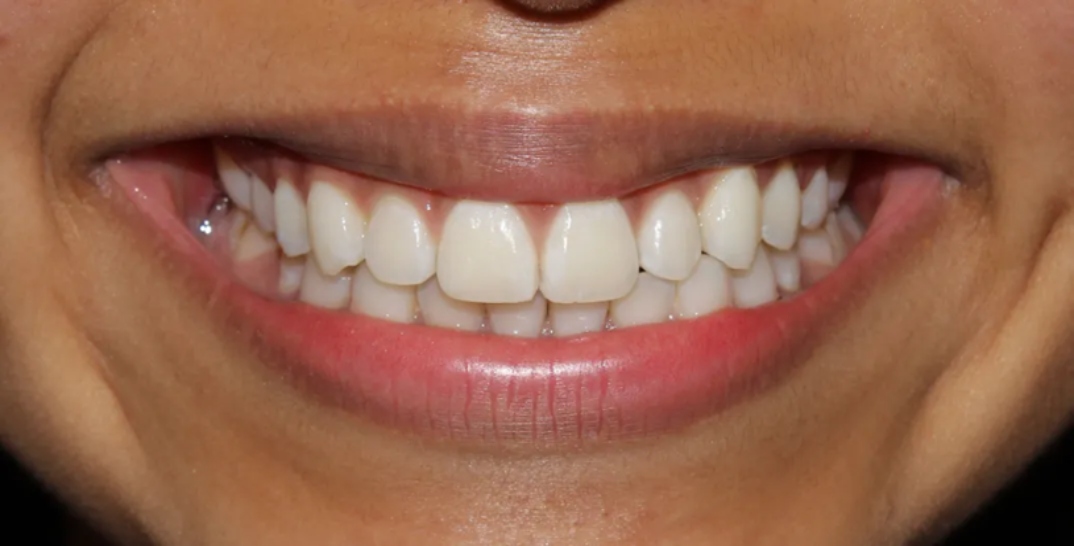
Teeth Whitening

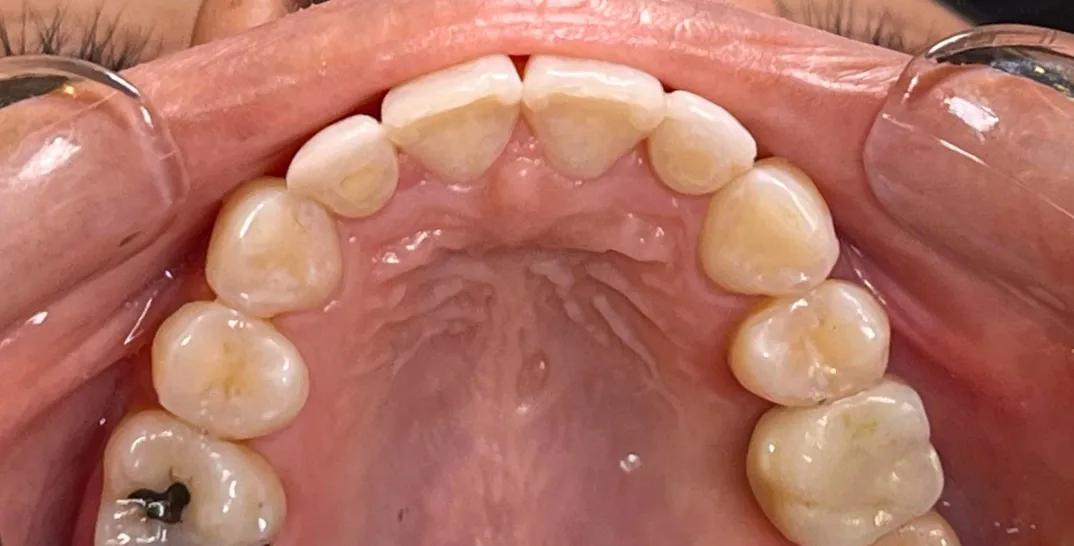
Dental Implants
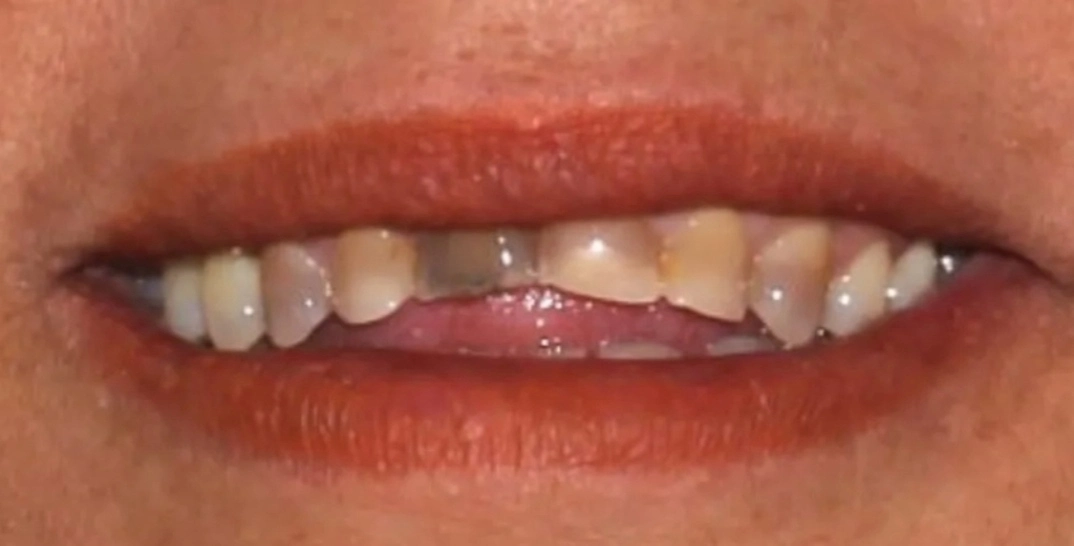
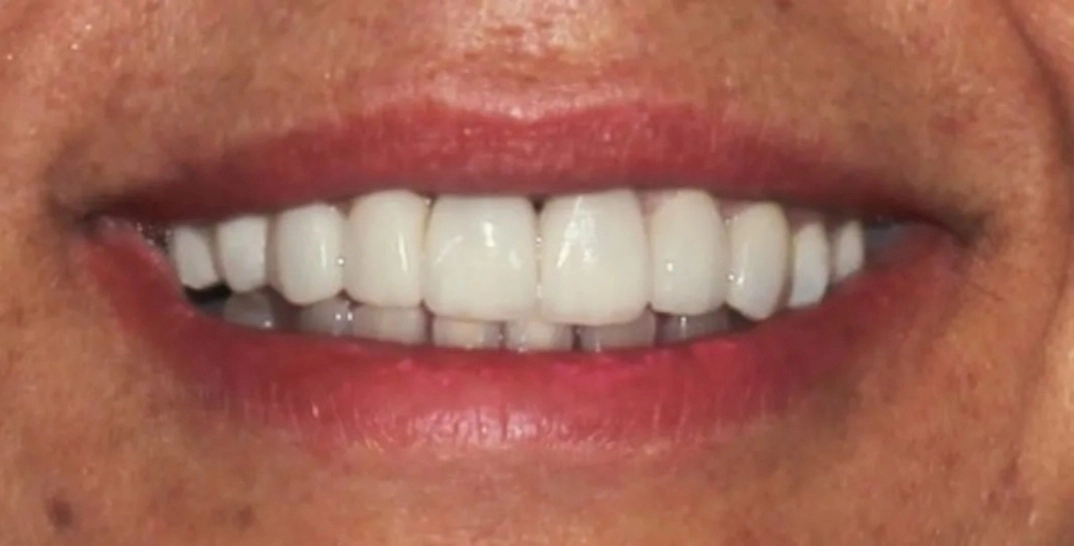
Porcelain Crown
Testimonials


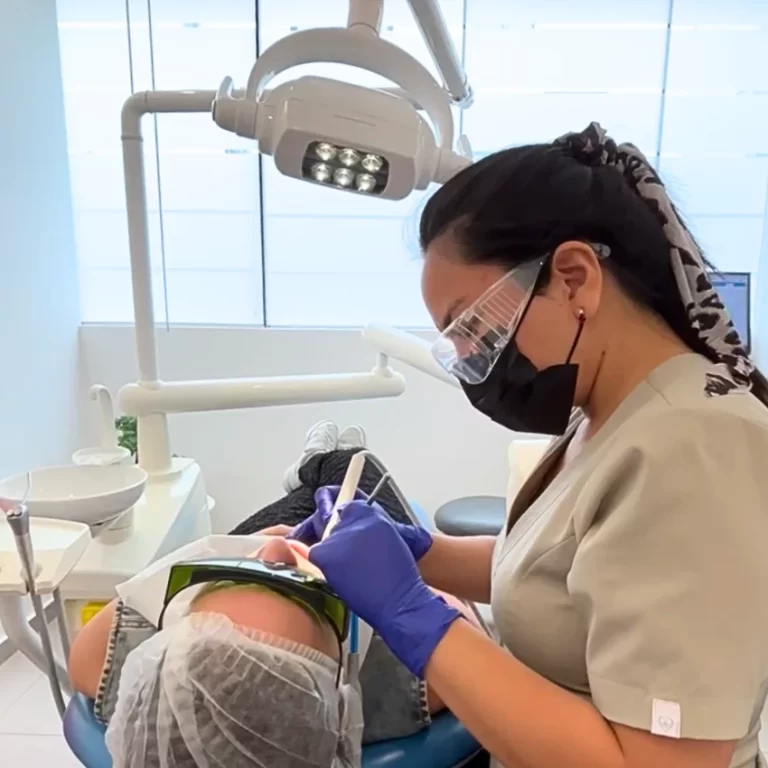
CHANGE YOUR LIFE NOW!